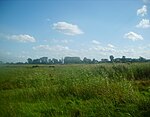German auxiliary cruiser Orion
1930 shipsAuxiliary cruisers of the KriegsmarineCruisers sunk by aircraftMaritime incidents in May 1945Ships built in Hamburg ... and 6 more
Ships of the Hamburg America LineShips sunk by Soviet aircraftSteamships of GermanyWorld War II commerce raidersWorld War II cruisers of GermanyWorld War II shipwrecks in the Baltic Sea

Orion (HSK-1) was an auxiliary cruiser of Nazi Germany's Kriegsmarine which operated as a merchant raider in World War II. Blohm & Voss built her in Hamburg in 1930–31 as the cargo ship Kurmark. The navy requisitioned her at the start of World War II, had her converted into the auxiliary cruiser Orion, and commissioned her on 9 December 1939. Known to the Kriegsmarine as Schiff 36, her Royal Navy designation was Raider A. She was named after the constellation Orion.
Excerpt from the Wikipedia article German auxiliary cruiser Orion (License: CC BY-SA 3.0, Authors, Images).German auxiliary cruiser Orion
Świnoujście Chorzelin
Geographical coordinates (GPS) Address Nearby Places Show on map
Geographical coordinates (GPS)
| Latitude | Longitude |
|---|---|
| N 53.95 ° | E 14.283333333333 ° |
Address
Chorzelin
72-602 Świnoujście, Chorzelin
West Pomeranian Voivodeship, Poland
Open on Google Maps









